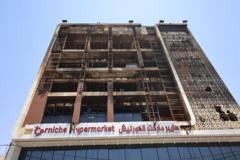The recent partial collapse of a newly renovated 14th-century tower in eastern China has raised urgent concerns regarding safety standards and the management of cultural heritage sites.
**Drum Tower Collapse in China Sparks Outcry Over Renovation Practices**

**Drum Tower Collapse in China Sparks Outcry Over Renovation Practices**
A historic site’s integrity questioned following roof failure and investigation
The reconstructed roof of the Drum Tower, located in Fengyang County, dramatically fell apart earlier this week, prompting numerous inquiries into the renovation practices that led to this unfortunate event. Footage circulating on social media captured the moment tiles tumbled from the roof, causing onlookers to scatter in panic as clouds of dust engulfed the surrounding plaza. Fortunately, the Fengyang government confirmed that no injuries occurred as a result of the collapse.
This tower, an important cultural relic dating back to 1375 during the Ming dynasty, boasts the largest base of any drum tower in China. Historically, such structures were vital for communities, providing a way to keep time. However, the above structure, characterized by its traditional curved eaves and tiled roof, was only erected in 1995 due to the original’s destruction in the 19th century.
Just last year, this modern structure underwent significant renovations, aimed specifically at addressing issues related to falling roof tiles—the very problem that contributed to its collapse. The Fengyang government communicated that the cost of renovations reached approximately 3 million yuan (almost $420,000), sparking widespread criticism regarding the quality and management of public funds. Simultaneously, concerns arose about the history of the construction company, which had previously faced scrutiny when a renovation project resulted in a fire that damaged part of an ancestral hall in Anhui.
As investigations continue, this incident highlights the vital need for more stringent oversight and standards in the renovation practices of cultural heritage sites across China, ensuring that historical integrity and public safety remain paramount.
This tower, an important cultural relic dating back to 1375 during the Ming dynasty, boasts the largest base of any drum tower in China. Historically, such structures were vital for communities, providing a way to keep time. However, the above structure, characterized by its traditional curved eaves and tiled roof, was only erected in 1995 due to the original’s destruction in the 19th century.
Just last year, this modern structure underwent significant renovations, aimed specifically at addressing issues related to falling roof tiles—the very problem that contributed to its collapse. The Fengyang government communicated that the cost of renovations reached approximately 3 million yuan (almost $420,000), sparking widespread criticism regarding the quality and management of public funds. Simultaneously, concerns arose about the history of the construction company, which had previously faced scrutiny when a renovation project resulted in a fire that damaged part of an ancestral hall in Anhui.
As investigations continue, this incident highlights the vital need for more stringent oversight and standards in the renovation practices of cultural heritage sites across China, ensuring that historical integrity and public safety remain paramount.






















